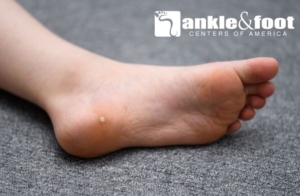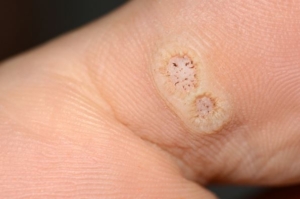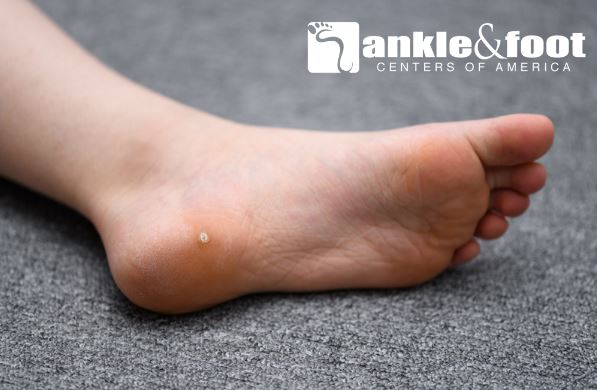 A plantar wart, also known as a verruca, is a small, non-cancerous growth that appears on the sole of the foot. These warts are caused by a viral infection, specifically the human papillomavirus (HPV). They can be unsightly and uncomfortable, but they are usually not a serious health concern.
A plantar wart, also known as a verruca, is a small, non-cancerous growth that appears on the sole of the foot. These warts are caused by a viral infection, specifically the human papillomavirus (HPV). They can be unsightly and uncomfortable, but they are usually not a serious health concern.
Plantar warts are characterized by their rough, raised surface and distinct black dots, which are actually small, clotted blood vessels. They may be located anywhere on the sole of the foot, but they are most common on weight-bearing areas such as the heel and ball of the foot. They can vary in size and shape, but they are typically less than half an inch in diameter.
Table of Contents
Understanding Plantar Warts: Causes and Symptoms
Plantar warts are caused by HPV, a highly contagious virus that can be spread through contact with contaminated surfaces such as shower floors or locker room floors, or through direct contact with an infected person. The virus enters the body through small cuts or breaks in the skin on the foot. Once inside, it causes the skin cells to multiply rapidly, resulting in the formation of a wart.
So, what is a Plantar wart? They are most common in children and young adults, but they can occur at any age. People with weakened immune systems, such as those with diabetes or HIV, are at a higher risk of developing plantar warts.
Verruca can be found on the soles of the feet and are recognizable by their rough, cauliflower-like appearance and gray or brown, scaly surface. In addition to this unique appearance, a person with a plantar wart may experience discomfort around the affected area. Other symptoms of plantar warts may include Other symptoms of plantar warts may include
- pain or discomfort when walking or standing
- a rough, raised surface on the skin, and small black dots on the surface of the wart
- a cluster of growths
Treatment for Plantar Warts
 Treatment for plantar warts typically begins with over-the-counter remedies such as topical wart medications, which contain salicylic acid to break down the wart tissue. It’s important to follow the instructions on the package carefully to ensure that the medication reaches the wart tissue, and not to overuse it as it can cause skin irritation.
Treatment for plantar warts typically begins with over-the-counter remedies such as topical wart medications, which contain salicylic acid to break down the wart tissue. It’s important to follow the instructions on the package carefully to ensure that the medication reaches the wart tissue, and not to overuse it as it can cause skin irritation.
Another option for treating plantar warts is cryotherapy, which involves freezing the wart with liquid nitrogen. Cryotherapy is typically done in a doctor’s office and may require multiple treatments for complete removal of the wart.
Surgical removal of the wart is also an option, but this should only be done by a healthcare professional. This procedure involves using a sharp instrument, such as a scalpel, to shave off the wart.
Prevent Plantar Warts
Preventing plantar warts is important as they are highly contagious.
- To reduce your risk of developing plantar warts, you should avoid walking barefoot in public places, such as locker rooms and swimming pools, and avoid sharing towels or shoes with others.
- It’s also important to keep your feet clean and dry, and to avoid picking at or biting your nails, as this can increase your risk of developing warts.
Podiatrists Can Remove Your Plantar Wart
 Plantar warts is a common foot problem, caused by the human papillomavirus (HPV), are benign growths that can be incredibly painful and difficult to ignore, so it is important to understand when medical examination is necessary.
Plantar warts is a common foot problem, caused by the human papillomavirus (HPV), are benign growths that can be incredibly painful and difficult to ignore, so it is important to understand when medical examination is necessary.
Generally speaking, if you’ve had a plantar wart for more than a few months or experience sudden pain or swelling, it’s time to seek medical attention from a professional podiatrist to have it removed.
Warts can grow in size and cause infection if untreated, so seeking timely care is critical for preventing long-term damage. As there is no need to wait until complications arise, we recommend consulting a specialist before any issues stem from your wart.








